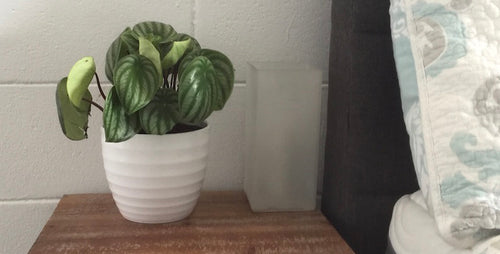
HELP! MY PLANT IS DROPPING LEAVES!
Take a deep breath! Leaf droppage is part of the natural growing cycle of most plants. Plants shed old leaves and replace them with new ones. But when plants with big leaves (such as fiddleleaf figs) lose leaves, it feels like a personal failure. Some plants can actually lose a lot of leaves (ficus trees are famous for this) and it’s alarming.
The culprits of leaf drop
Generally when a plant loses a lot (or all!) of its leaves, it’s a sign that something needs to be changed. And fast. There are a number of reasons that plants lose leaves (other than the natural leaf drop of a growing plant). Here are 5 things to look for.
1. Has something in your plant’s life changed?
Some plants drop leaves dramatically if there is a big change in their life, such as a new location or repotting.
2. Look at how you are watering.
Some plants drop leaves if they are too wet. Or too dry. See these watering tips. Why does this happen? The roots absorb moisture from the soil and the leaves release moisture as the plant breathes. If the potting mix stays too dry, there's not enough moisture for the plant to main its leaves and they wilt, then drop. If there's too much moisture, the roots start to suffocate and die. As roots die, the plant is able to take in less moisture, and drops leaves accordingly.
3. Light affects leaf drop.
Your plant may shed leaves if there is a dramatic change of light. Did you move the plant indoors from outdoors or get new light-blocking curtains lately? Here are ways to determine light in your home.
Some plants, such as ficus, are known for dropping leaves in response to stress or shock. While moving from one set of growing conditions to another can cause this, also keep an eye out for transplant stress and sudden changes in temperature, including drafts (such as being near a heating or air-conditioning vent).
4. Are you feeding your plant?
If you haven’t fertilized your plant in awhile, give your plant a snack. Lack of nutrients may be the culprit. Feed your plant the right way.
5. Is your plant root bound?
If your plant needs repotting, it may be dropping leaves. Is it time to repot? See how.
Look for signs of life
If there is life in the plant, there is hope. Is the stem still supple? Are the branches still bendable? This means the body of the plant is still alive. There are some plants, such as ZZ plant, that can lose all their leaves and, when the problem is corrected, new leaves will appear.
BOTTOM LINE
If your plant is losing leaves (or has lost all of them), investigate water and light issues and correct them. If the stem and branches are still bendable, there’s life. And hope.
Read more plant care tips:
Wilted Leaves: Can This Plant Be Saved?
Yellow Leaves: Can This Plant Be Saved?
Written by Karen Weir-Jimerson

















